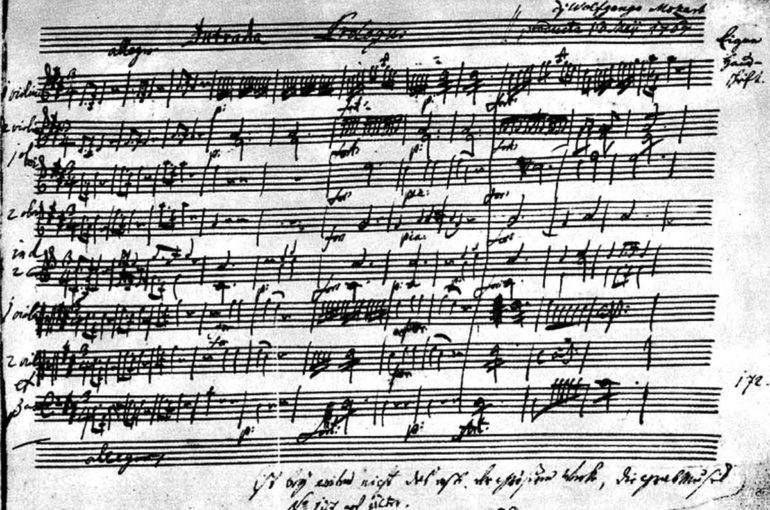Apollo et Hyacinthus K.38
Apollo et Hyacinthus K.38
Photos : “Hyacinthe changé en fleur” (Nicolas-René Jollain, 1769) – Manuscript of the Intrada
Infos
Genre : II/5 Operas and singspiels
Composition : Salzburg, 1767 (Dated 13 May 1767)
First performance : Salzburg, Benedictine University, 1767
Orchestration : 2 oboes, 2 horns, strings (with divided violas)
Language : Latin
Librettist : Rufinus Widl, after Ovid’s Metamorphoses
Manuscript : Marburg, Westdeutschen Bibliothek
Score : DME Online
Apollo et Hyacinthus was composed by Mozart at the age of 11, as an intermedium to be inserted between the acts of a five-act Latin tragedy Clementia Croesi (The Clemency of Croesus). At the end of each academic year, there was indeed in Salzburg a tradition of performing Latin plays at the Benedictine University.
Cast
The only-male cast included a young tenor, and four boys singing the alto/soprano parts (including the female role of Melia). Twenty-four years later, Mozart would rewrite roles specifically for children’s voices, with the three boys in Die Zauberflöte.
Oebalus, King of Lacedaemonia (tenor) – Mattias Stadler (22 years old)
Melia, Oebalus’s daughter (soprano) – Felix Fuchs (15 years old)
Hyacinthus, Oebalus’s son (soprano) – Christian Enzinger (12 years old)
Apollo, entertained by Oebalus as his guest (contralto) – Johann Ernst (12 years old)
Zephyrus, Hyacinthus’s confidant (contralto) – Joseph Vonderthon (17 years old)
Two Priests of Apollo (bass) – Joseph Brundl (18 years old) & Jakob Moser (16 years old)
Libretto
Rufinus Widl, who wrote the libretto, was a Benedictine monk and a professor at the Salzburg university. The libretto is based on the mythological story of Apollo and Hyacinth, from Euripides and, more particularly, from Ovid’s Metamorphoses. Maybe because of its homoerotic theme – the jealousy of Zephyr of the love of Apollo and Hyacinth -, Widl added two other characters : Melia and Oebalus. The work is in three parts, ‘Prologus’ (given before the play), Chorus I (after the second act) and Chorus II (before the fifth and last act).
The young god Apollo is in love with Melia, daughter of Oebalus, king of the Lacedaemonia and also craves the attention of the king’s son, Hyacinthus. Zephyrus, also in love with Melia and full of jealousy, throws a discus on Hyacinthus, which severely injure him. Apollo then turns Zephyrus into a gale and lets him blow away. Apollo turns Hyacinthus into a sea of hyacinth flowers and wins Melia’s love.
Music
According to conductor Ian Page, “Apollo et Hyacinthus displays remarkable maturity, individuality and virtuosity, and there are constant reminders that the eleven-year-old composer had already written a substantial and impressive body of works” (read full article here).
There are indeed several remarkable pages in this early opera: the irresistible and dynamic Intrada which opens the work, the virtuoso and colourful Melia’s aria, or the two duets Melia/Apollo and Melia/Oebalus which show an astonishing musical maturity for an eleven-year-old child.
Listen
Our favorite version is the one conducted by Ian Page, on period instruments, with orchestra Classical Opera. The roles are sung by women voices (except Oebalus).
Watch
You can watch in this video a show filmed in 1983, and close to the conditions of creation of Mozart’s work in 1767. The main roles, with the exception of Oebalus, are all sung by boys, all soloists of the wonderful Tölzer Knabenchor.






